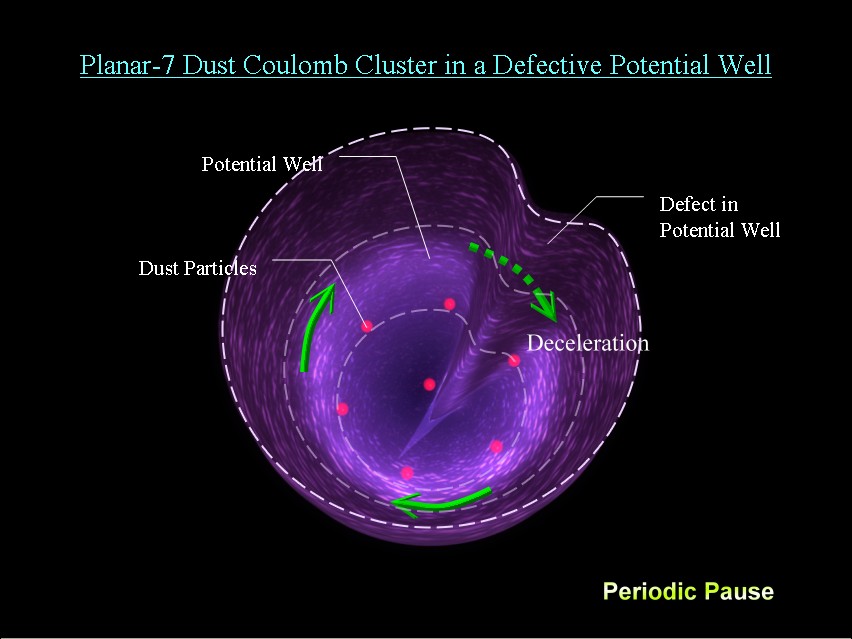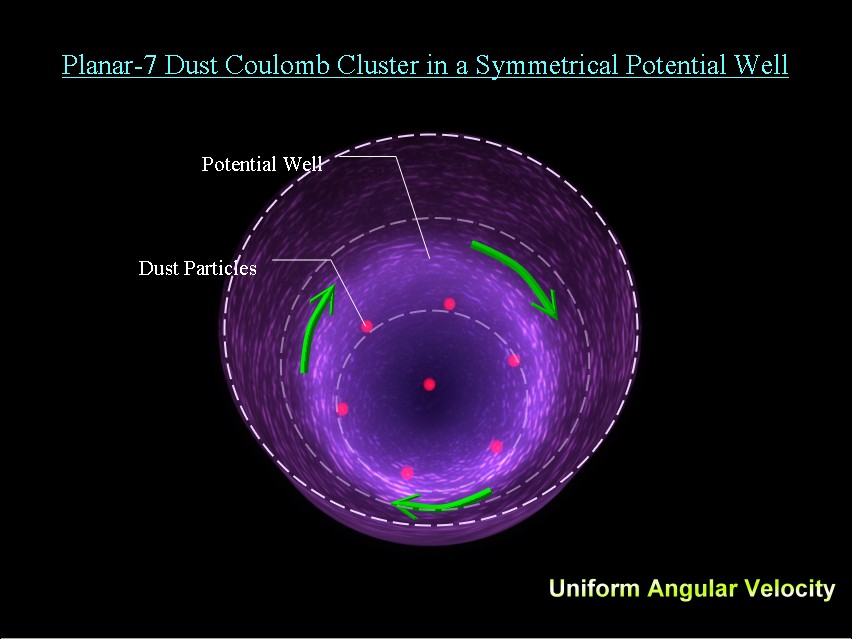3.1 - Asymmetrical Potential Well
As we can see in chapter 2.1, the rotation of the
dust cluster is not uniform especially when the magnetic field strength is low
and the number of particles is small. The reason why such periodic motion
occurs is still unknown. One reason could be that the particles in the dust
clusters normally go under uniform rotation (see figure 3.1.1). However, it is
highly probable that the potential well which was used to confined the
particles might not be perfectly circular.
-
Figure 3.1.1 - For an ideal electric potential, the particles in dust
cluster should go under uniform rotation. In this visualization, the
particles on the outer ring in planar-7 are going under uniform rotation. This visualization is drawn using
Maya Unlimited 4.0 and Ulead PhotoImpact 7.
And if we have a hill in the potential well, then
the particles will decelerate (see figure 3.1.2). This potential irregularity
could be due to the asymmetry in the apparatus setup. As a matter of fact, if
the particles are unable to overcome this potential hill, then the cluster
will not be able to initiate rotation. This coincides with the phase diagrams
we obtained in figure 2.1.1. At low magnetic field, because the particles does
not have enough driving force to push it over the potential hill, oscillatory
motion at a particular angle was observed. And if we look at the phase diagram
for planar-2, we see that the angle at which the particles oscillate about
increase gradually as magnetic field strength increases. This would coincide
with the theory of asymmetric potential well.

-
Figure 3.1.2 - However, if there is a potential hill in the electric
potential well, then the particles in a dust cluster must overcome the
potential hill during its rotation. As a result, the angular velocity of the
cluster would decelerate. In this visualization, the particles on the outer
ring of a planar-7 cluster went under deceleration because of the defect in
the potential well . This defect could be due to the asymmetry in the
experimental setup. This visualization is drawn using Maya Unlimited 4.0 and
Ulead PhotoImpact 7.


